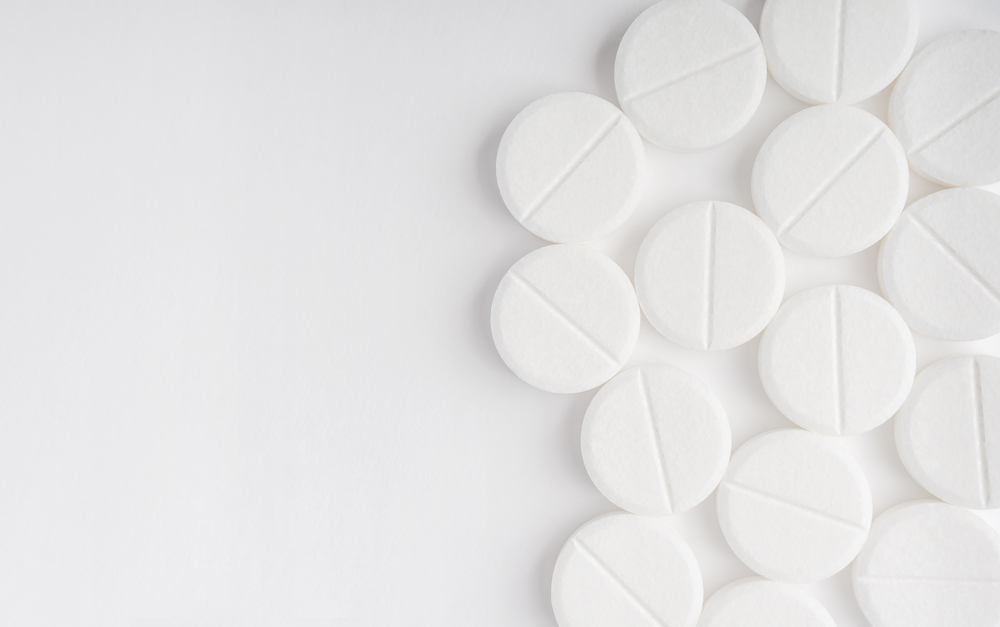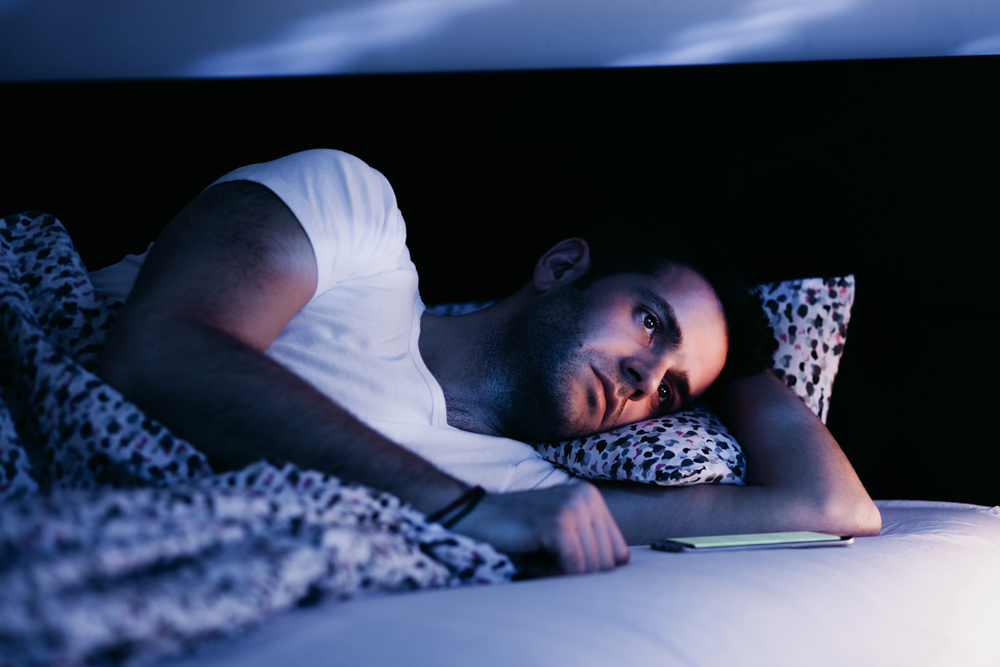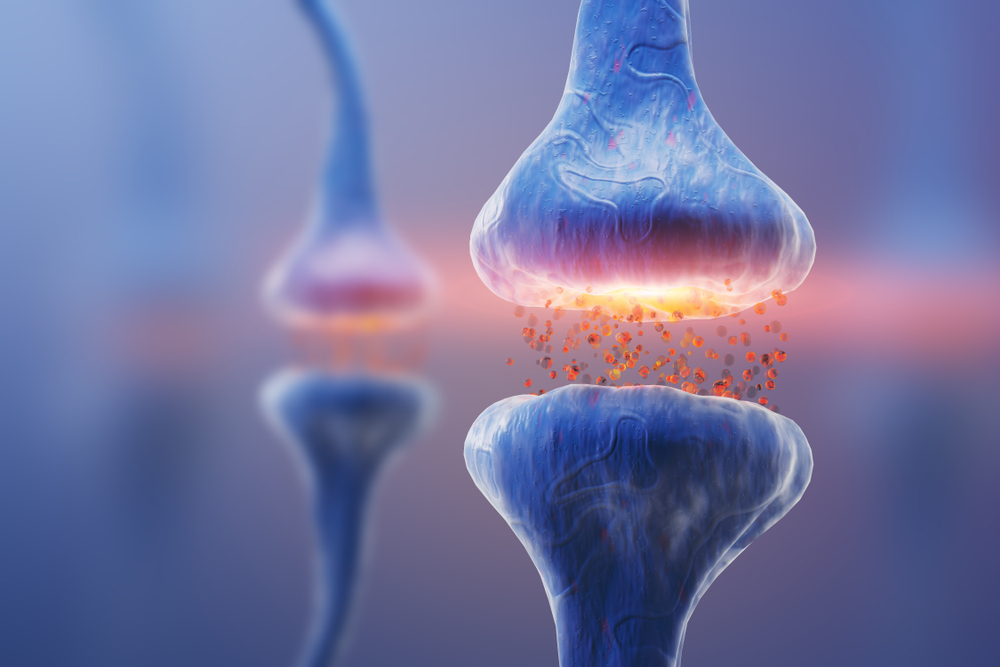Trazodone, also known as Oleptro®, is a powerful prescription antidepressant and anti-insomnia medication.
In 2016, Trazodone was the 24th most prescribed medication in the United States with more than 25 million prescriptions handed out over the course of the year.
This drug can lead to addiction over time, even with a doctor’s prescription. Others use the drug to get high as doses over 300 mg are thought to produce mild psychoactive effects. Recreational use of Trazodone is especially prone to cause addiction.
Trazodone abuse and addiction is deadly, leading to symptoms of withdrawal, suicidal tendencies, anxiety, and depression.
In this article, we’ll go over what makes Trazodone addiction and what you can do if you or someone you love become addicted.

What is Trazodone?
Trazodone is a serotonin modulator similar to other common antidepressants like Celexa, Lexapro, Zoloft, and Prozac. It’s primarily used to treat insomnia and depression.
The main difference between Trazodone and other serotonin-modulating medications is how the drugs affect serotonin. Most antidepressant drugs are classified as selective serotonin reuptake inhibitors (SSRIs), while Trazodone is classified as a serotonin antagonist and reuptake inhibitor (SARI) [1].
Both SSRIs and SARIs inhibit the reuptake of serotonin, preventing the breakdown of this important neurotransmitter. Trazodone and other SARI medications have the added effect of inhibiting serotonin receptors in the brain (specifically 5HT2 receptors). This gives the drug another layer of psychological effects. It’s considered a hypnotic — something SSRI medications lack.
Trazodone also inhibits other stimulating neurotransmitters, norepinephrine, and histamine, giving it anti-anxiety and anti-insomnia benefits.
The broad effects produced by the drug make it useful for many different medical conditions. The most common involve depression (unipolar) and insomnia.
Here are some of the primary ways doctors are using Trazodone:
1. Trazodone for Depression
There are many causes for depression, including neurochemical imbalances in the brain.
One of the main neurotransmitter imbalances causing depression is low serotonin levels [2]. Therefore, many antidepressant medications work by boosting the effects of serotonin in the brain, including Trazodone.
Trazodone has comparable benefits towards treating depression to other antidepressants such as selective serotonin reuptake inhibitors (SSRIs), monoamine oxidase inhibitors (MAOIs), selective serotonin and norepinephrine reuptake inhibitors (SNRIs), and tricyclic antidepressants (TCAs) [3].
It’s safer than most of these other antidepressants but doesn’t come without its risks — the most significant being a dramatic increase in risk for suicide.
When treating depression with Trazodone, symptoms usually get worse before they start to get better. It often takes several weeks before any real benefit is noticed from taking Trazodone. By this time, signs of addiction to the drug are common.
2. Trazodone for Insomnia
The other primary use of Trazodone is for treating insomnia. This drug is considered a hypnotic — Hypnotics help people fall asleep and stay asleep by inhibiting critical neurotransmitters in the brain such as norepinephrine and histamine. Both of these neurotransmitters are involved with stimulating the brain, so inhibiting them makes users feel tired, making it easier to fall asleep at night.
Unlike most anti-insomnia medications, Trazodone doesn’t cause daytime sleepiness, making it an attractive option for people looking for supporting various sleeping disorders.

3. Other Uses for Trazodone
Some doctors prescribe Trazodone for conditions such as anxiety, schizophrenia, and eating disorders. It’s also added to other medication routines for controlling side-effects of other medications like muscle spasms and uncontrolled movements.
The mechanism of action for many of these additional uses remains poorly understood.
Off-Label Uses for Trazodone:
- Anxiety
- Alcohol withdrawal
- Fibromyalgia
- Headaches
- Panic Disorder
- Reflex Sympathetic Dystrophy Syndrome
- Schizophrenia
- Eating disorders (binge-eating and obesity)
- Side-effects of other medications
- Complex regional pain syndrome
- Obsessive-compulsive disorder
- Erectile dysfunction
How Trazodone Works
Trazodone works by changing the concentrations of serotonin in the brain to counterbalance serotonin imbalances. It does this by inhibiting the reuptake of serotonin in the brain, causing serotonin levels around the synapses of the nerve cells to increase. Trazodone can help users fall asleep and maintain their mood throughout the day.
Serotonin is an important neurotransmitter associated with the regulation of emotions, hormone levels, sleep, and cognitive function. Low serotonin levels are associated with depression, and sleeping disorders [2].
Trazodone also has serotonin receptor antagonist effects —It blocks the serotonin receptors. This is contradictory to the effects of the drug on increasing serotonin levels, but the source of many of the off-label uses for Trazodone including schizophrenia and alcohol withdrawal symptoms. The underlying mechanism of action for Trazodone is still not fully understood [3].
Other neurotransmitter receptors are also inhibited by Trazodone, including norepinephrine and histamine — leading to its potent hypnotic effects [3]. This is likely the reason behind the benefits of Trazodone towards insomnia.

Generic vs. Brand Name Trazodone
The Food and Drug Administration (FDA) first approved trazodone in 1981 under the brand name Desyrel® (manufactured by Pragma Pharmaceuticals).
All the patents protecting the manufacturer from competing pharmaceutical companies have since expired, and there are now several generic versions of the drug available.
In America, most Trazodone prescriptions involve Oleptro — however, a lot of brand name versions from other countries are sold illegally across the country.
Other Names for Trazodone:
- Codipzona — Chile
- Trazodona Bussié — Colombia
- Apo-Trazodone — Canada
- Donaren — Brazil
- Oleptro — United States
- Traze —India
Side-Effects Of Trazodone:
- Worsening depression
- Suicidal thoughts
- A severe rash or hives
- Serotonin syndrome
- Swelling of the face, lips, or tongue
- Chest pain
- Difficulty breathing
- A painful erection that will not go away (priapism)
- Panic attack
- Irregular heartbeat
- Fainting
- Unusual bruising or bleeding
- Seizure
- Priapism
Trazodone Addiction
Trazodone is less addictive than other classes of medications (like prescription painkillers or stimulants) — however, becoming addicted to Trazodone is still very possible.
People who use the drug for non-medical reasons (to seek a high) are significantly more likely to become addicted to the substance, according to the National Institute of Drug Abuse.
Additionally, most people who are addicted to antidepressants like Trazodone, are primarily addicted to another drug, the antidepressant use comes as a secondary addiction to manage side-effects of other forms of drug abuse.
Some people take large doses of Trazodone recreationally for the mild high it produces. Taking larger doses of the drug can result in hallucinations. This places users at high risk for overdose and addiction to Trazodone, especially over the course of a few weeks or months of regular use.
Signs of Trazodone Addiction:
- Attempting to source Trazodone without a prescription
- Going through Trazodone prescriptions before the prescription refill date
- Combining Trazodone with other drugs and alcohol
- Visiting various doctors in for more Trazodone prescriptions
- Illegal purchases of Trazodone
- Trazodone use begins interfering with other aspects of life, such as work, school, or other personal responsibilities
- Taking Trazodone to get high, rather than treating depression or insomnia
- Needing to take high doses of the drug to experience its effects

Trazodone Withdrawal
When someone is physically addicted to Trazodone, they will experience painful side-effects when the drug is not in their system. This is known as withdrawal.
This happens when the body adapts to the regular, high doses of Trazodone, by making changes to the receptors it interacts with. As soon as there is no more Trazodone in the body, these changes make us feel sick — the body has been compensating for the effects of the Trazodone, so without it we lose the ability to regulate these neurotransmitters on our own.
The main symptoms of Trazodone withdrawal present as the very symptoms it’s used to treat.
Symptoms of Trazodone Withdrawal:
- Severe depression
- Insomnia
- Anxiety
- Erectile dysfunction
- Agitation
- Suicidal thoughts
Trazodone Overdose
Taking too much Trazodone can cause an overdose — usually in the range of 600 mg or more per day.
The normal dose for the drug is between 50 and 300 mg per day, depending on the individual. Usually, a doctor will prescribe the lowest dose, and build up gradually while monitoring for signs of toxicity. People taking the drug as a prescription are also closely monitored by their doctor to spot signs of addiction and tolerance early — minimizing the chances of an overdose.
People Most at Risk of Overdosing on Trazodone Include:
- Recreational users seeking high doses of the drug for hallucinogenic effects
- Long-term users of the drug who have developed tolerance to the drug and require large doses to receive the desired effects
- People mixing Trazodone with other drugs or alcohol
The primary concern with a trazodone overdose is serotonin syndrome — a condition caused by excessive levels of serotonin in the brain.
What is Serotonin Syndrome?
Serotonin syndrome is a potential and a serious side-effect of any serotonin medication. As these drugs increase the concentrations of serotonin in the brain, these neurotransmitters start to cause widespread changes in the body, some of which can become fatal.
Symptoms of Serotonin Syndrome:
- High body temperature
- Agitation
- Increased reflexes
- Muscle tremors
- Excessive sweating
- Dilated pupils
- Seizures
- Breakdown of muscle tissue
- Diarrhea
- Coma
- Death
Other Side-Effects of Trazodone Overdose:
- Vomiting
- Drowsiness
- Painful erection
- Abnormal heartbeat
- Trouble breathing
- Seizures
Treating Trazodone Overdose
Unfortunately, there is no antidote for Trazodone overdose. Call emergency services immediately if you find someone overdosing on Trazodone.
If the patient can get to the hospital in time, there’s a good chance that doctors will be able to save their life and limit damage to the brain and other areas of the body.
Doctors have access to drugs that can treat symptoms and block the effects of serotonin in an attempt to mute the effects of the overdose.

Treatment Options for Trazodone Addiction
Trazodone addictions are treated with many of the same tactics as any addictive drug. There are three main steps taken when treating Trazodone addiction:
1. Medical Detox
The first step is to start reducing the dose of the drug to gradually reverse any tolerance formed by the body. This step is called detoxing, which can be done at home, or in a professional rehab or detox center.
For antidepressants, this step is highly recommended in the presence of trained medical professionals that can monitor side-effects of withdrawal and reduce harm. The most concerning side effect of the detox process with Trazodone is suicidal intentions.
As the withdrawal symptoms subside, feelings of deep depression and suicidal thoughts tend to go away.
2. Treatment for Co-occurring Disorders
The next step involves identifying the underlying cause of the addiction. If depression or insomnia is what initially lead users to the drug, doctors will try to identify the cause and will take measures to treat these conditions with other methods while detoxing the Trazodone from the body.
3. Comprehensive Therapy
This is the step where the real treatment for Trazodone addiction begins. This step lasts several weeks or months and is designed to retrain the brain to no longer crave the drug. All successful recoveries involve comprehensive inpatient (at a rehab facility) or outpatient (at home) care.
A) Inpatient Care
Once the Trazodone his successfully detoxed, patients will check into a rehab center where they’re given time for personal reflection, support group sessions, and retraining of habits and triggers for taking the drug. The aim of this treatment is to provide ex-Trazodone addicts with the tools needed to stop compulsive Trazodone use.
Retraining habits, eliminating triggers of stress and depression, and sleep hygiene therapy are all used to help those who were addicted to the effects of the drug. By learning to take control of their life instead of relying on the effects of the drug to get by, patients are given the best opportunity to succeed possible.
B) Outpatient Care
The same comprehensive therapies involving support groups. Psychological evaluation, counseling, and even drug therapies are used without attending a dedicated rehab center.
Patients are often scheduled to meet with health professionals and support groups a few times each week for several months until any urges to take the drug have been eliminated. This can take anywhere from 4 weeks to 12 months.
Outpatient care is a popular mode of treatment but tends to have lower success rates than inpatient care at a rehab facility.

Conclusion: Trazodone Addiction & Overdose
Trazodone is a popular antidepressant and anti-insomnia medication. It’s considered to be a third generation antidepressant, safer than drugs like Prozac, Zoloft, or Seroquel.
Although safer than other antidepressants, Trazodone doesn’t come without its risks and can form addictive habits. A Trazodone addiction tends to appear slowly over many months of taking the drug, or rapidly along with recreational use. Many users are taking the drug in high doses for its ability to make users feel high and experience hallucinations or sedation.
Overdose is also possible when taking the drug, which can be fatal. The most concerning side-effect of a Trazodone overdose is serotonin syndrome — causing irreversible brain damage and death if immediate medical attention isn’t provided.
Treating Trazodone addiction is best done under the care of trained medical professionals in a detox or rehabilitation center. Here, patients can be monitored for adverse side-effects like suicidal thoughts, and deep depression to provide the best chances of recovery.
References
- Stahl, S. M., & Stahl, S. M. (2013). Stahl’s essential psychopharmacology: neuroscientific basis and practical applications. Cambridge university press.
- Owens, M. J., & Nemeroff, C. B. (1994). Role of serotonin in the pathophysiology of depression: focus on the serotonin transporter. Clinical chemistry, 40(2), 288-295.
- Shin, J. J., & Saadabadi, A. (2018). Trazodone. In StatPearls [Internet]. StatPearls Publishing.
- Levenson, J. L. (1999). Prolonged QT interval after trazodone overdose. American Journal of Psychiatry, 156(6), 969a-970.
- Gamble, D. E., & Peterson, L. G. (1986). Trazodone overdose: four years of experience from voluntary reports. The Journal of clinical psychiatry, 47(11), 544-546.
- Nierenberg, A. A., Adler, L. A., Peselow, E., Zornberg, G., & Rosenthal, M. (1994). Trazodone for antidepressant-associated insomnia. American Journal of Psychiatry, 151(7), 1069-1072.